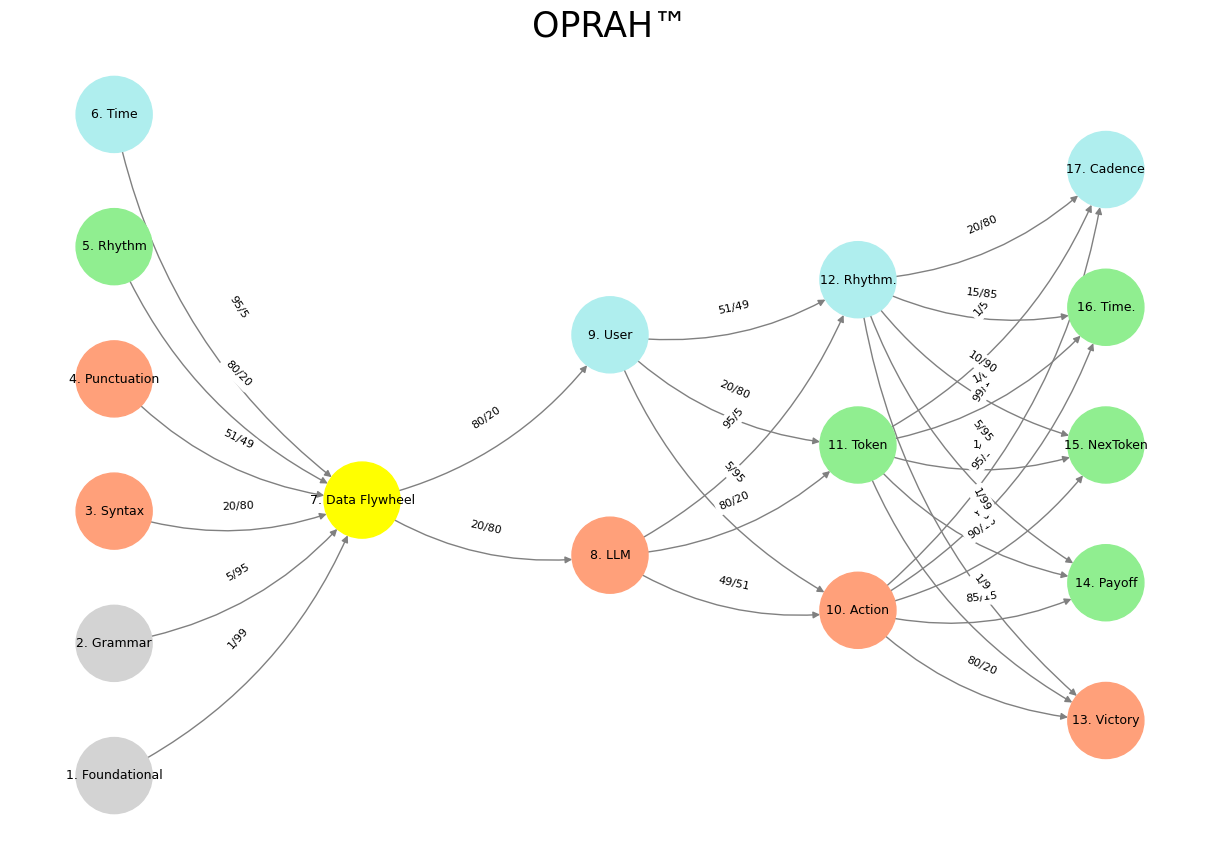Ecosystem#
Rupert Murdoch and King Canute represent two distinct models of power and its limitations—one defined by the relentless assertion of control, the other by an awareness of its futility. Murdoch, the media tycoon, has spent a lifetime bending narratives, markets, and political landscapes to his will, constructing an empire where influence operates like a force of nature. His business acumen is adversarial, constantly reshaping equilibria, whether through acquisitions, editorial shifts, or strategic maneuvers like Project Harmony, a late-life attempt to cement his legacy by ensuring his preferred successor. In contrast, Canute, the medieval king, is remembered for a single defining moment: commanding the tide to halt, only to demonstrate that even a monarch’s power has limits. Whether apocryphal or not, Canute’s gesture suggests a ruler who understands that beyond human ambition, there are forces—whether natural or divine—that remain untouched by decree.

Fig. 9 Deviens: To Deviate From the Group & Become One’s Own. Indeed, deviens (from the French verb devenir, “to become”) and deviating share a common Latin root: venire, meaning “to come.” Etymological Breakdown: 1. Devenir (deviens, 2nd-person singular present tense) From Latin devenire (“to come down, arrive at”), composed of: de- (“down, away, from”)venire (“to come”) 2. Deviate From Latin deviāre (“to turn aside, wander”), composed of: de- (“away, off”) via (“way, path”). Shared Concept: Both words imply movement away from a prior state or direction: Deviens (devenir) → Becoming something different, emerging as one’s own. Deviate (dévier) → Straying from an expected path, diverging from the group. Thematic Connection: This suggests that becoming (devenir) contains an implicit divergence from the collective, an individuation. To become oneself may require a deviation from predefined paths—so the journey of devenir might inherently include dévier at key junctures.#
Murdoch’s approach to power is fundamentally different; he does not concede to the tide. Instead, he builds breakwaters, redirects currents, and, when necessary, buys the oceanfront. His influence over media is not about resisting the inevitable but about shaping what is perceived as inevitable. Where Canute offered a lesson in humility, Murdoch represents a model of power that thrives on the illusion of permanence, carefully crafting a reality where public sentiment and political will can be nudged, if not entirely controlled. Yet, as seen in the recent dispute over his family trust, even Murdoch faces the ultimate reckoning of succession—one that eludes even the most meticulously engineered structures of power.
The irony is that, in the end, both Murdoch and Canute illustrate the same truth: no ruler, however formidable, can truly dictate the tides. Canute acknowledged this from the outset, while Murdoch has spent a lifetime defying it. His legacy, now at the mercy of heirs and market forces, may yet prove whether his empire was built on shifting sands or something more enduring.
Show code cell source
import numpy as np
import matplotlib.pyplot as plt
import networkx as nx
# Define the neural network layers
def define_layers():
return {
'Suis': ['Foundational', 'Grammar', 'Syntax', 'Punctuation', "Rhythm", 'Time'], # Static
'Voir': ['Data Flywheel'],
'Choisis': ['LLM', 'User'],
'Deviens': ['Action', 'Token', 'Rhythm.'],
"M'èléve": ['Victory', 'Payoff', 'NexToken', 'Time.', 'Cadence']
}
# Assign colors to nodes
def assign_colors():
color_map = {
'yellow': ['Data Flywheel'],
'paleturquoise': ['Time', 'User', 'Rhythm.', 'Cadence'],
'lightgreen': ["Rhythm", 'Token', 'Payoff', 'Time.', 'NexToken'],
'lightsalmon': ['Syntax', 'Punctuation', 'LLM', 'Action', 'Victory'],
}
return {node: color for color, nodes in color_map.items() for node in nodes}
# Define edge weights (hardcoded for editing)
def define_edges():
return {
('Foundational', 'Data Flywheel'): '1/99',
('Grammar', 'Data Flywheel'): '5/95',
('Syntax', 'Data Flywheel'): '20/80',
('Punctuation', 'Data Flywheel'): '51/49',
("Rhythm", 'Data Flywheel'): '80/20',
('Time', 'Data Flywheel'): '95/5',
('Data Flywheel', 'LLM'): '20/80',
('Data Flywheel', 'User'): '80/20',
('LLM', 'Action'): '49/51',
('LLM', 'Token'): '80/20',
('LLM', 'Rhythm.'): '95/5',
('User', 'Action'): '5/95',
('User', 'Token'): '20/80',
('User', 'Rhythm.'): '51/49',
('Action', 'Victory'): '80/20',
('Action', 'Payoff'): '85/15',
('Action', 'NexToken'): '90/10',
('Action', 'Time.'): '95/5',
('Action', 'Cadence'): '99/1',
('Token', 'Victory'): '1/9',
('Token', 'Payoff'): '1/8',
('Token', 'NexToken'): '1/7',
('Token', 'Time.'): '1/6',
('Token', 'Cadence'): '1/5',
('Rhythm.', 'Victory'): '1/99',
('Rhythm.', 'Payoff'): '5/95',
('Rhythm.', 'NexToken'): '10/90',
('Rhythm.', 'Time.'): '15/85',
('Rhythm.', 'Cadence'): '20/80'
}
# Calculate positions for nodes
def calculate_positions(layer, x_offset):
y_positions = np.linspace(-len(layer) / 2, len(layer) / 2, len(layer))
return [(x_offset, y) for y in y_positions]
# Create and visualize the neural network graph
def visualize_nn():
layers = define_layers()
colors = assign_colors()
edges = define_edges()
G = nx.DiGraph()
pos = {}
node_colors = []
# Create mapping from original node names to numbered labels
mapping = {}
counter = 1
for layer in layers.values():
for node in layer:
mapping[node] = f"{counter}. {node}"
counter += 1
# Add nodes with new numbered labels and assign positions
for i, (layer_name, nodes) in enumerate(layers.items()):
positions = calculate_positions(nodes, x_offset=i * 2)
for node, position in zip(nodes, positions):
new_node = mapping[node]
G.add_node(new_node, layer=layer_name)
pos[new_node] = position
node_colors.append(colors.get(node, 'lightgray'))
# Add edges with updated node labels
for (source, target), weight in edges.items():
if source in mapping and target in mapping:
new_source = mapping[source]
new_target = mapping[target]
G.add_edge(new_source, new_target, weight=weight)
# Draw the graph
plt.figure(figsize=(12, 8))
edges_labels = {(u, v): d["weight"] for u, v, d in G.edges(data=True)}
nx.draw(
G, pos, with_labels=True, node_color=node_colors, edge_color='gray',
node_size=3000, font_size=9, connectionstyle="arc3,rad=0.2"
)
nx.draw_networkx_edge_labels(G, pos, edge_labels=edges_labels, font_size=8)
plt.title("OPRAH™", fontsize=25)
plt.show()
# Run the visualization
visualize_nn()


Fig. 10 For the eyes of the Lord run to and fro throughout the whole earth, to shew himself strong in the behalf of them whose heart is perfect toward him. Herein thou hast done foolishly: therefore from henceforth thou shalt have wars. Source: 2 Chronicles 16: 8-9. The grammar of these visuals is plain: there’s a space & time for the cooperative rhythm, transactional, and adversarial.#

